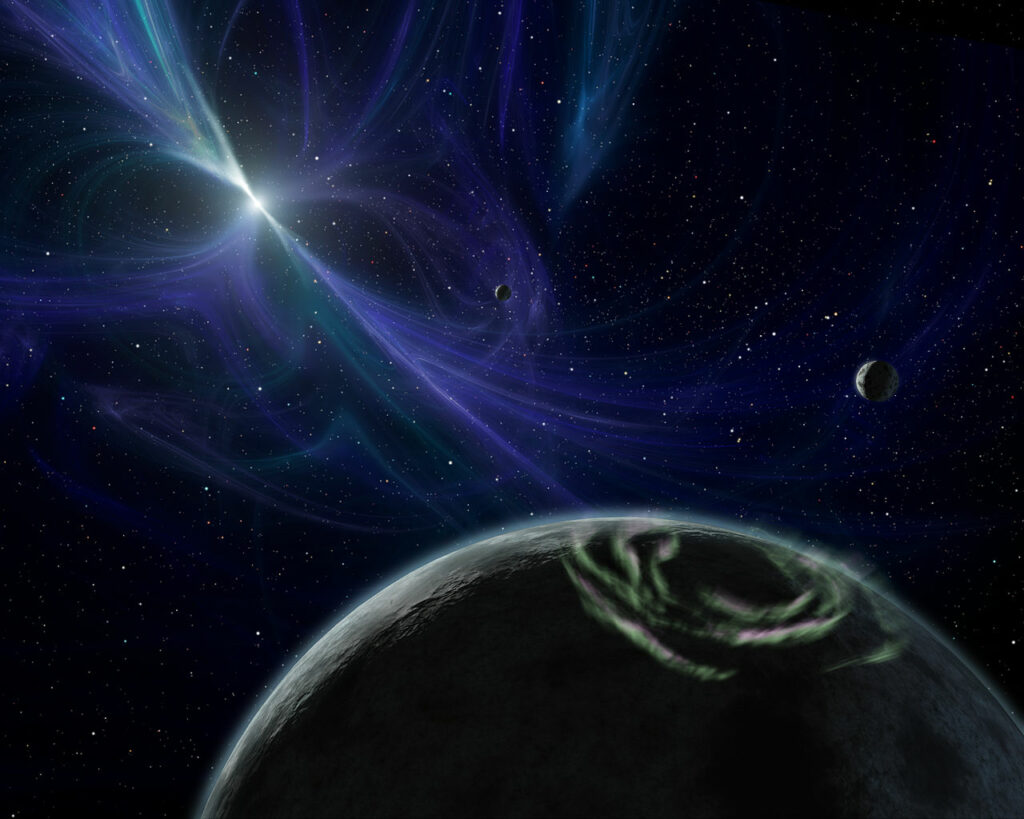British astronomers have reported the discovery of ten candidates for pulsar exoplanets. This is what planet-like moons orbiting neutron stars are called. The discovery indicates a wide range of orbits and masses of similar objects.
Mystery of pulsar planets
In 1992, astronomers discovered the first exoplanets in history. The discovery has put the scientific world at a standstill. The fact is that the newly found exoplanets orbited the pulsar PSR B1257+12. Since pulsars are formed as a result of supernova explosions, this raised the logical question of how any bodies could have survived in its vicinity. Subsequently, it is hypothesized that these are “secondary” objects formed from the substance left after the explosion.

In the following decades, astronomers managed to find several more pulsar planets, but in general, such finds were very rare. This indicated that such bodies were the exception rather than the rule. In an attempt to confirm or refute this assumption, a team of British astronomers conducted a study of the vicinity of 800 known pulsars using the radio telescopes of the Jodrell Bank Observatory. The search covered possible planets with masses up to 100 terrestrial and with orbital periods from 20 days to 17 years.
Finding Pulsar Planets
During the study, scientists confirmed that pulsar planets are very rare. According to recent estimates, they are present in the systems of only about 0.5% of pulsars. In total, the researchers managed to find ten candidates for such objects. The most promising is the PSR J2007+3120 pulsar system. Traces of two exoplanets were found in it. They are several times more massive than the Earth and have a rotation period of 1.9 and 3.6 years.
In general, astronomers have not been able to identify clear patterns in the ratios of masses and periods of rotation of pulsar planets. They are united only by very elongated orbits, uncharacteristic of ordinary exoplanets. This indicates a fundamentally different mechanism for the formation of such bodies.
You can also read about how the Spitzer telescope data helped solve the mystery of silicate clouds on exoplanets.
According to https://phys.org
Follow us on Twitter to get the most interesting space news in time
https://twitter.com/ust_magazine
